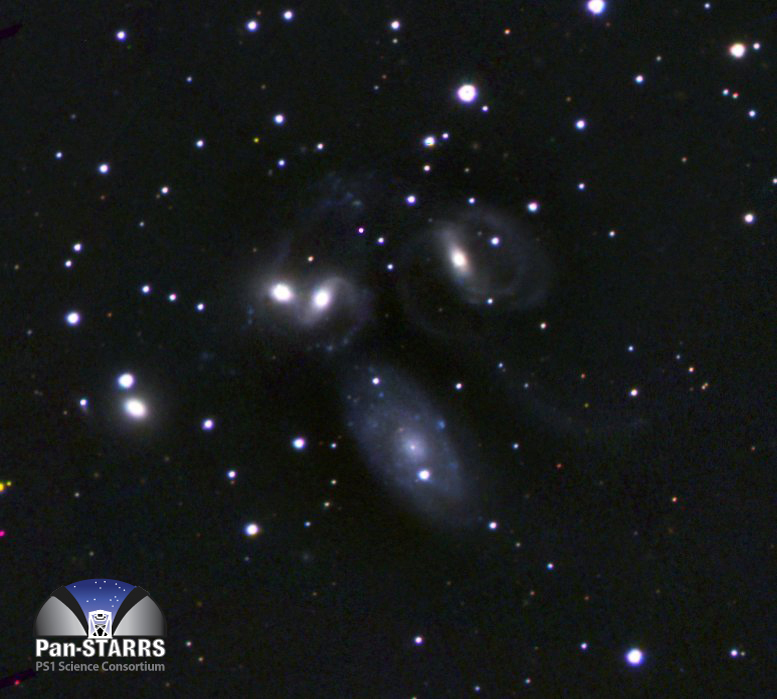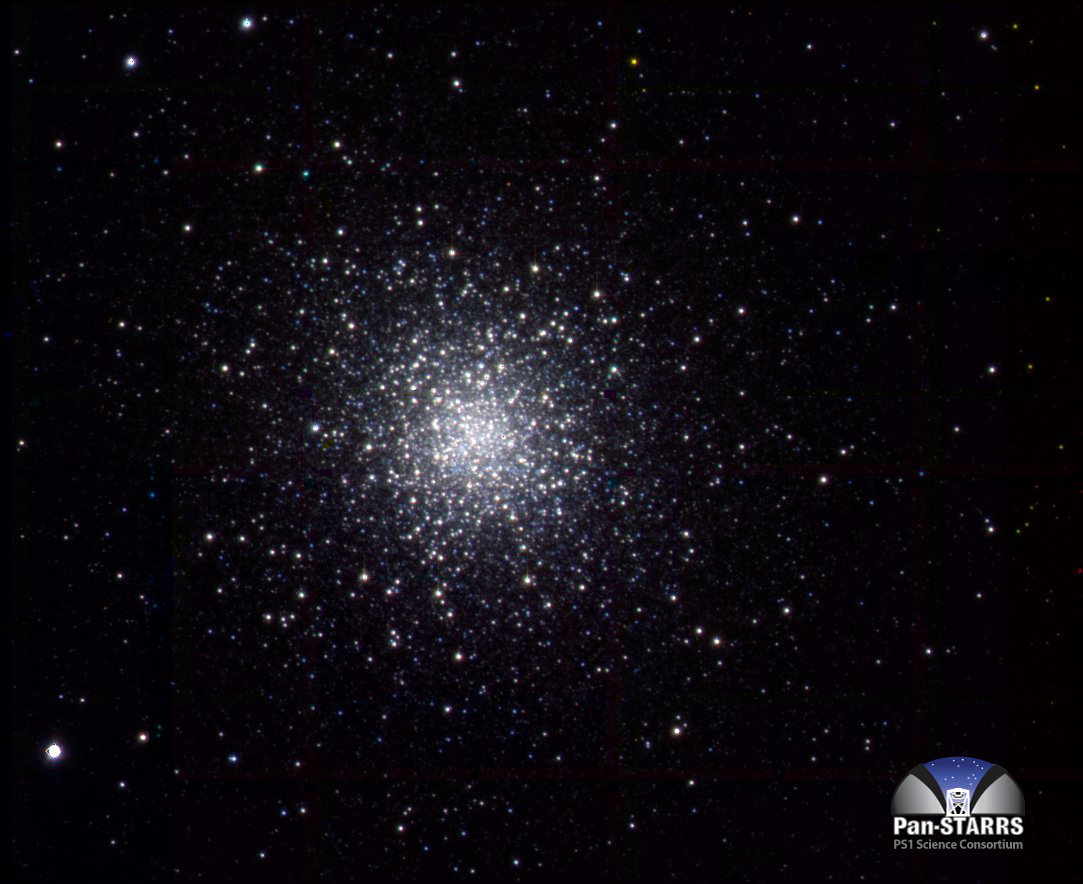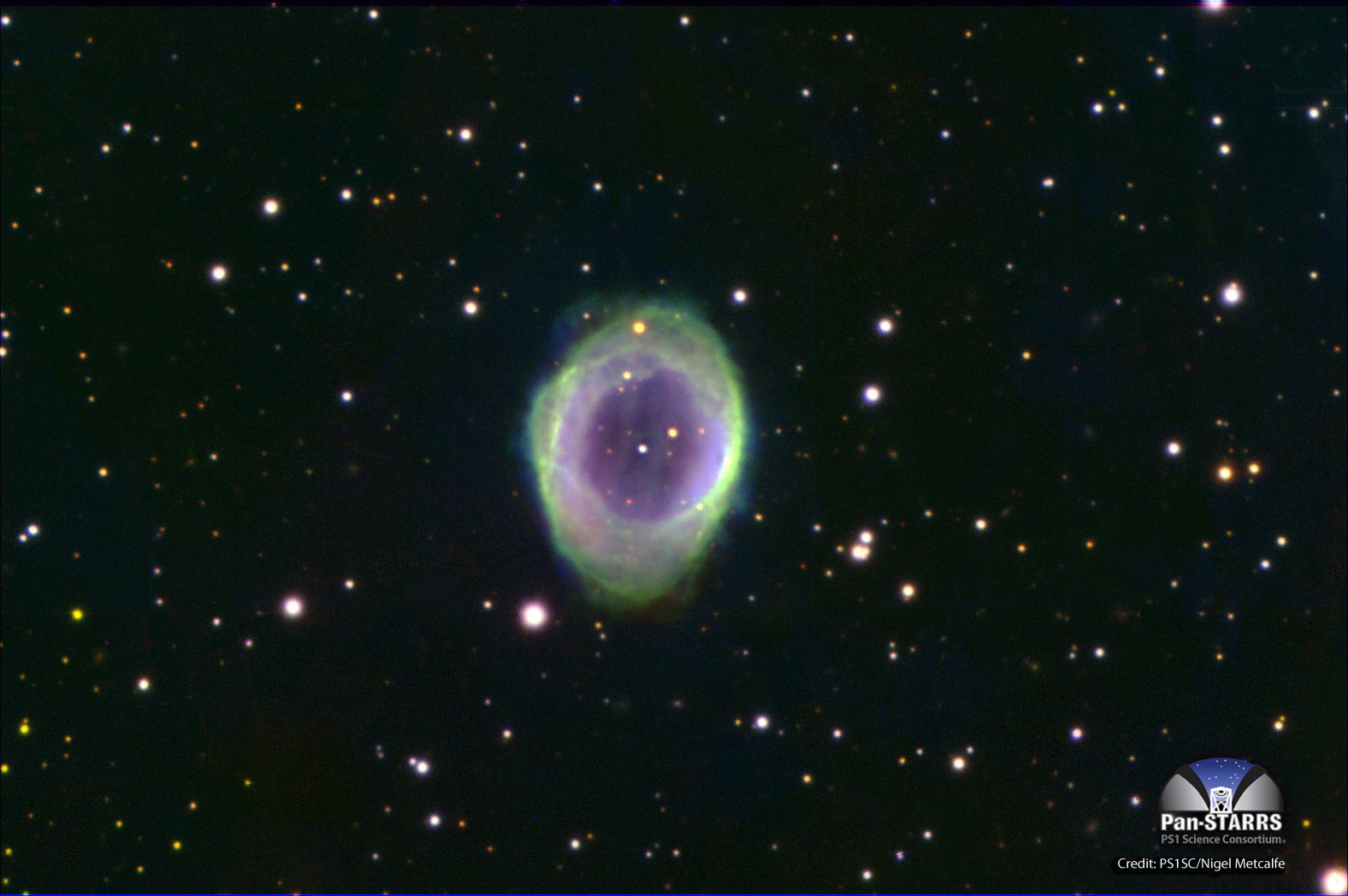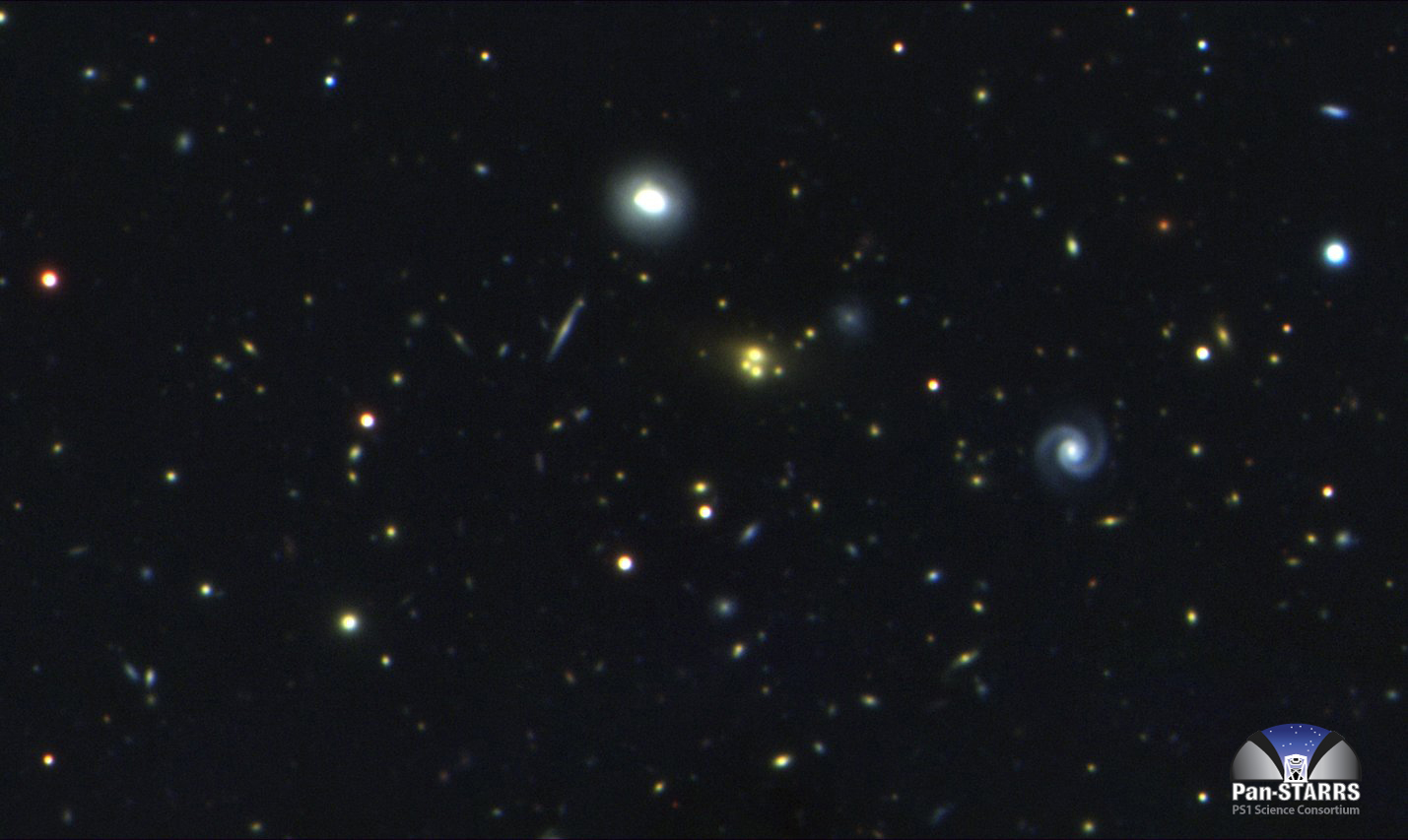PS1 image of the Month
Pan-STARRS is a groundbreaking project to survey the sky visible from Hawai`i looking for undiscovered asteroids, distant exploding stars and much more.
If you have questions about the blog please contact blog AT ps1sc.org.
Powered by 
October 28th, 2011 by ps1scblog

Stephan's Quintet, a beautiful group of galaxies in Pegasus. Credit: Nigel Metcalfe/PS1SC
This month we are in the constellation of Pegasus looking at one of the most famous groups of galaxies in the sky. Stephan’s Quintet is an arrangement of five spectacular galaxies. Four of these are a physically associated group while one (the largest in the image NGC 7320) actually lies much closer. Note the galaxy with too nuclei, this is actually two galaxies in the process of colliding.
Posted in PS1 image of the Month, Uncategorized
September 22nd, 2011 by ps1scblog

The globar cluster M2. Credit PS1SC/Nigel Metcalfe
This month our image comes from the constellation of Aquarius. It’s M2, a globular cluster situated 37,000 light-years away. Globular cluster such as these are dense groups of some of the oldest stars known in our Galaxy.
Posted in PS1 image of the Month
August 7th, 2011 by ps1scblog

The Ring Nebula, M57. Credit:PS1SC/Nigel Metcalfe
This month’s Pan-STARRS image of the Month is M57, the Ring Nebula. This is a planetary nebula, remains of the death-throws of a star of about the same mass as the Sun. The colour variations are caused by excited low density gas. Different colours indicate different elements or different levels of excitation. The dot in the centre is a white dwarf, the remnant of the now dead star which created the nebula.
Posted in PS1 image of the Month
July 4th, 2011 by ps1scblog

For this month’s PS1 Image of the Month we’re bringing you an unnamed cluster of galaxies found in one of the Pan-STARRS1 Medium Deep fields. While it hasn’t got a name, it’s certainly got pretty galaxies.
For this month’s PS1 Image of the Month we’re bringing you an unnamed cluster of galaxies found in one of the Pan-STARRS1 Medium Deep fields. While it hasn’t got a name, it’s certainly got pretty galaxies.
Posted in PS1 image of the Month
June 1st, 2011 by ps1scblog

The 63 brightest Galaxies in Pan-STARRS1 Medium Deep field 4. Click to see the full resolution image.
This is the first in our series of Pan-STARRS Image of the Month. Every month we’ll be bringing you a stunning image for the Pan-STARRS1 telescope. These are created by PS1 scientists in their spare time just because they love producing these stunning vistas. Todays image comes to us courtesy of Nigel Metcalfe of the University of Durham. Well I say image, but for our first Pan-STARRS Image of the Month we’ve cheated and given you 63 of them as an extra bonus. These are the brightest galaxies from one of the Pan-STARRS1 Medium Deep fields. These fields are surveyed nearly every night when they are visible to search for exploding stars called supernovae. However the images can also be stacked together to make a really deep map of the area of sky they cover. These gorgeous galaxies are from just one of the ten Medium Deep fields PS1 covers. You really have to see the full-sized image to appreciate it.
Posted in PS1 image of the Month
The Pan-STARRS Project is being led by the University of Hawaii Institute for Astronomy, and exploits the unique combination of superb observing sites and technical and scientific expertise available in Hawaii. Funding for the development of the observing system has been provided by the United States Air Force Research Laboratory. The PS1 Surveys have been made possible through contributions by the Institute for Astronomy, the University of Hawaii, the Pan-STARRS Project Office, the Max-Planck Society and its participating institutes, the Max Planck Institute for Astronomy, Heidelberg and the Max Planck Institute for Extraterrestrial Physics, Garching, The Johns Hopkins University, Durham University, the University of Edinburgh, the Queen's University Belfast, the Harvard-Smithsonian Center for Astrophysics, the Las Cumbres Observatory Global Telescope Network, Incorporated, the National Central University of Taiwan, and the National Aeronautics and Space Administration under Grant No. NNX08AR22G issued through the Planetary Science Division of the NASA Science Mission Directorate. Any opinions, findings, and conclusions or recommendations expressed in this article are those of the author(s), and do not necessarily reflect the views of the National Aeronautics and Space Administration, the PS1 Science Consortium or its member institutions.






